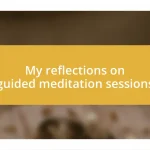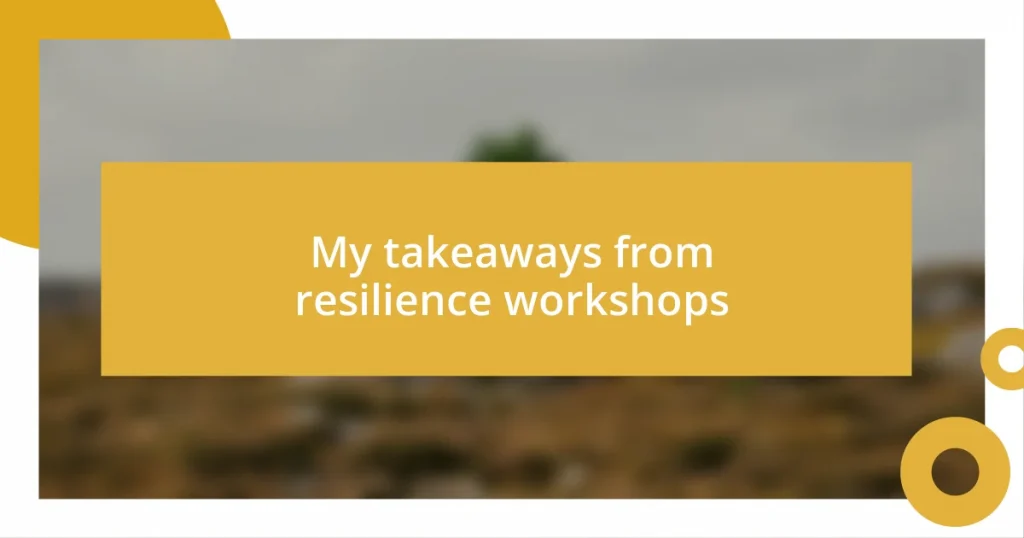Key takeaways:
- Journaling serves as a safe space for emotional expression, helping to transform chaotic thoughts into clarity and fostering self-reflection.
- Setting clear intentions enhances the journaling experience, providing focus and guiding writers towards deeper self-discovery and healing.
- Integrating journaling into daily routines, such as connecting it with existing habits, significantly improves consistency and enriches emotional well-being.
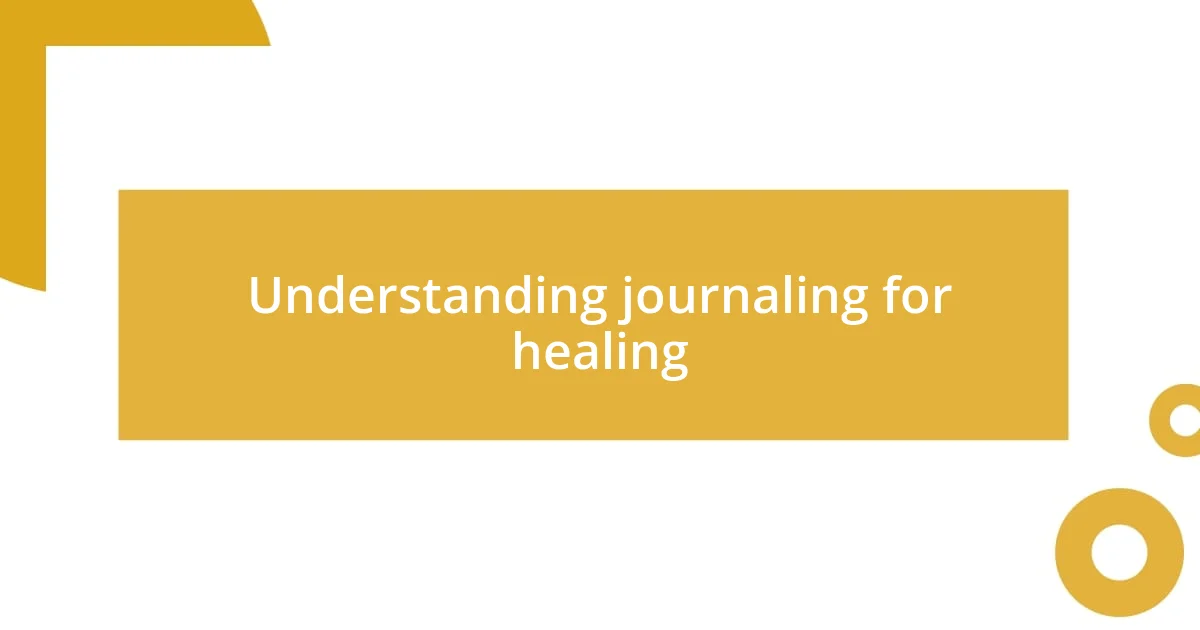
Understanding journaling for healing
Journaling for healing isn’t just about putting pen to paper; it’s about creating a safe space for one’s thoughts and emotions. I remember feeling overwhelmed after a challenging breakup, and picking up my journal became a lifeline. How often do we bottle up our feelings? Writing it all down allows us to release those pent-up emotions.
As I delved deeper into my journaling practice, I discovered that it can transform chaotic thoughts into clarity. The simple act of recording my daily experiences helped me recognize patterns in my behavior and emotions. Have you ever written something down and felt a weight lift off your shoulders? It’s profound how externalizing our internal struggles can bring about a sense of relief and understanding.
Through my journey, I’ve found that journaling not only fosters self-reflection but also promotes emotional resilience. There were days when just a few sentences captured my frustration, while other days filled pages with gratitude. It’s fascinating to see how this practice helps us navigate the complexities of our feelings—have you allowed yourself the time to explore your inner world through journaling?

Setting intentions for your journal
Setting intentions for your journal is a crucial step toward making the practice effective and meaningful. Personally, I found that when I set clear intentions, my journaling transformed from a mere habit into a powerful tool for healing. For example, I started with the intention to explore my fears, which opened up a new realm of understanding about myself. What intentions have you thought about for your journaling practice?
In my experience, intentions serve as a compass, guiding my writing when thoughts become scattered or overwhelming. I often write with the aim to either process an emotion or express gratitude. This duality not only provides structure to my entries but also creates a focused space where I can nurture my emotional well-being. Have you noticed how having a specific purpose changes the tone of your writing?
Establishing intentions can be as simple as setting aside a moment to reflect on what you hope to achieve from journaling. When I did this regularly, I found that my entries became more purposeful, leading to deeper insights. I recommend trying different intentions, such as self-discovery, healing, or even creative expression, to see which resonates most with you.
| Intention Type | Purpose |
|---|---|
| Self-Discovery | Explore thoughts, beliefs, and identity; reveal hidden patterns. |
| Healing | Process emotions; release traumas; cultivate self-compassion. |
| Gratitude | Shift focus to positive aspects of life; enhance emotional well-being. |
| Creativity | Foster inspiration; develop ideas; express feelings artistically. |

Techniques for effective journaling
Maintaining effective journaling techniques can elevate your experience significantly. I’ve found that free-writing often unlocks my creativity and emotions—there’s something liberating about jotting down whatever comes to mind without adherence to grammar or structure. It’s like letting the floodgates open. You might be surprised at what surfaces when there are no restrictions!
Here are some techniques that have supported my journey:
- Free-Writing: Set a timer for 10 minutes and write continuously. Don’t censor yourself—just let it flow.
- Prompt-Based Journaling: Use prompts like “What made me smile today?” to guide deeper reflections.
- Art Journaling: Combine writing with sketches or collages to express emotions visually.
- Listing: Create lists of feelings, goals, or things you’re grateful for; it’s a simple method to gain clarity.
- Reflective Questions: At the end of each entry, ask yourself a question to encourage further exploration, such as “What did I learn today?”
Challenging myself to incorporate these techniques made a tangible difference. I vividly remember a moment when I was grappling with anxiety. Instead of my typical recounting of events, I decided to create a list of what I was grateful for that day. It felt like sunshine piercing through the clouds of my worries, reminding me of the silver linings amidst chaos. You might find that switching up your techniques can reveal new layers of insight and healing!

Overcoming barriers to journaling
It’s not uncommon to feel hesitant about journaling, especially when you’re navigating a busy life or dealing with self-doubt. I remember a time when I told myself that I didn’t have anything “worthy” to write down. This thought made it easy to skip journaling sessions altogether. Eventually, I realized that every thought, no matter how small, held a piece of my emotional landscape. Have you ever felt like your thoughts weren’t significant enough to jot down? Taking those first steps, even if they feel trivial, can open up a floodgate of deeper reflections.
Another barrier I often faced was the fear of vulnerability. Writing about my emotions felt like peeling back layers of my soul, and that terrified me. Yet, I discovered that when I embraced vulnerability, my journaling blossomed into a safe space. One night, I penned down my struggles with self-acceptance. The act of putting my feelings on paper was cathartic—it felt like a weight had lifted. If you can relate to this fear, think about what could happen if you allowed your emotions to flow freely. What if that release was the very thing that started your healing journey?
Consistency can also be a challenge; life’s demands often push journaling to the back burner. I remember convincing myself I had to write for an hour every day to get the benefits. But as I adapted my expectations and began writing just a couple of sentences whenever I felt inspired, I found that my entries became much more authentic and meaningful. Could setting smaller, achievable goals help you too? Instead of viewing journaling as another chore, consider it a delightful conversation with your inner self—minus the pressure!
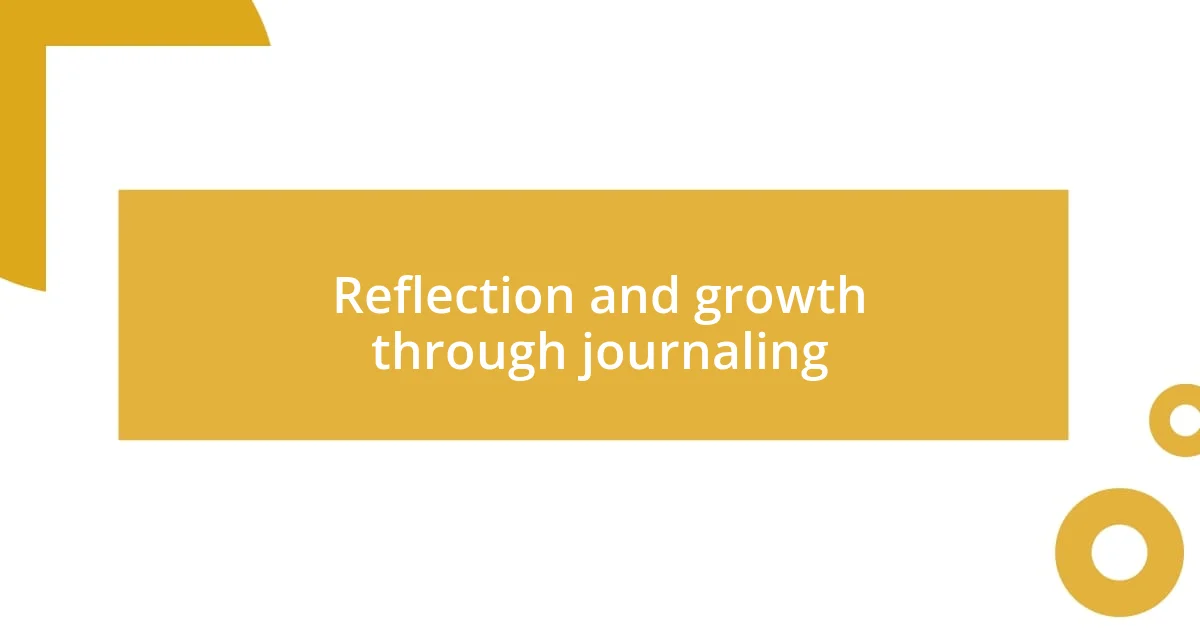
Reflection and growth through journaling
Many people overlook the simple yet profound act of reflecting on their journaling experiences. I remember a particularly tough week where everything felt overwhelming, and I took a moment to look back at my last few entries. The revisit revealed a pattern: I was frequently writing about my frustrations but also about moments of joy. It struck me how intertwined these emotions are, guiding my growth. Have you ever paused to reflect on your own entries and realized how much you’ve learned about yourself?
Journaling has a unique way of illuminating the path toward self-growth. One day, after writing about my dreams and aspirations, I noticed that fear was a recurring theme. I took a deep breath and confronted it head-on in my next entry. That act of acknowledging my fears not only brought clarity but propelled me to take action. When was the last time you dared to confront what holds you back?
As I’ve explored my thoughts on the page, I’ve experienced unexpected revelations that have shaped my journey. There was a night when I penned down my thoughts about past friendships; I hadn’t fully recognized how much they influenced my self-worth until I wrote it out. In those words, I discovered not just my pain, but also the strength I gained from those experiences. Isn’t it fascinating how jotting down our reflections can unfold layers of understanding we didn’t know existed?
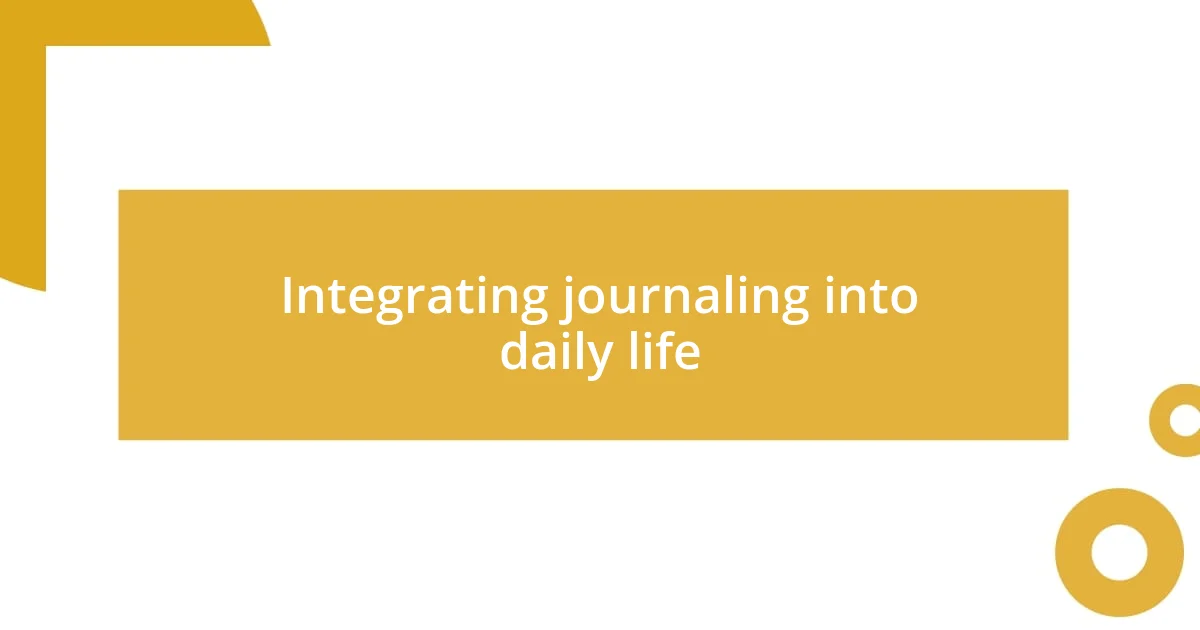
Integrating journaling into daily life
Integrating journaling into my everyday life became an enlightening experience that reshaped my routine. I started by dedicating just five minutes each morning to jot down my thoughts. It was surprising how a brief session could set a positive tone for my entire day. Have you considered how a few minutes of reflection can impact your mindset?
One practical approach I found helpful was linking journaling with an existing habit. For example, I began keeping my journal next to my coffee maker. As I waited for my morning brew, I’d take time to write about my intentions for the day. This simple pairing made journaling less of a task and more of an organic part of my morning ritual. Have you thought about how combining activities could create a seamless experience for you too?
Additionally, I made a commitment to journaling before bedtime, which transformed my evenings. I would unwind after a long day by writing about my experiences, exploring my emotions, and, at times, venting about the day’s stresses. This practice became a form of self-care, allowing me to process my thoughts and clear my mind before sleep. Do you think finding a specific time and setting could help you integrate journaling into your own life? Reflecting on the day not only nurtures my well-being but also encourages a sense of closure, paving the way for a more restful night.



